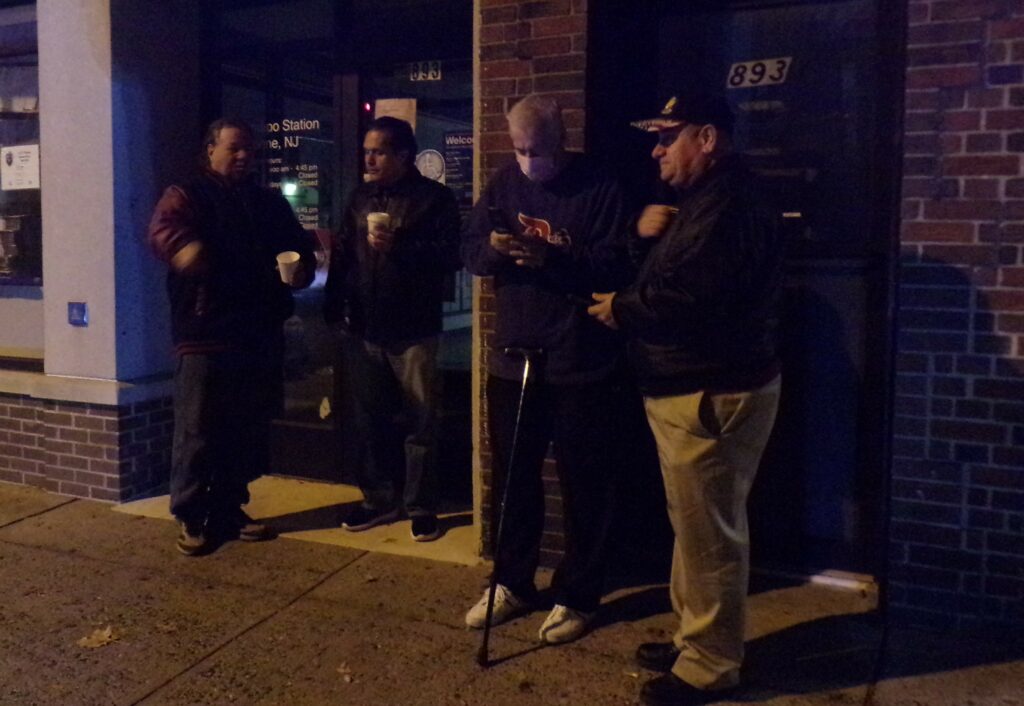Looking out for the Little Guy

Bayonne Councilman Neil Carroll III, the grandson of a legendary Hudson County political figure, was accused this week by the attorney of a developer of protecting “the old folk,” in his ward when Carroll insisted that a massive development include the replacement of the closed A&P in his ward.
“I don’t deny it,” Carroll said. “In fact, I’m proud of it. That’s my job. To raises questions about projects and to protect people who are in my ward.”
City officials in Bayonne have been grappling with the after affects of gentrification of their city, the southern most link in what is called the Gold Coast.
Officials do not deny that new development, almost all of which is luxury rental, is having an adverse effect on the traditional population of the Peninsula City, especially those who live in one and two family homes.
And also admit that there are almost no affordable housing units being constructed in places like the former Miliary Ocean Terminal. Which has been eyed for decades as the New Hoboken.
Old Bayonne was built on the back of the massive industry the city once possessed. But when that industry abandoned Bayonne for other places, the city – especially is three miles of Broadway shopping began to decay, and as a one time economic consultant once proclaimed, the city had to seek a way to take the pockets of the new, younger population he called “walking wallets.”
Bayonne is going through the same growing pains as Jersey City and other Hudson County towns, particularly along the path of the Hudson Bergen Light Rail, as developers look for new opportunities to build luxury rentals, and government seeks them out to increase their tax base.
While many of the projects slated for Bayonne are being constructed on former industrial sites, these projects such as the one proposed for the former A&P site are located in areas that were formerly homeowner neighborhoods, causing not just changes in the demographics, but also in the impact on the community as thousands of transient residents move into the new digs.
Bayonne officials point to the recent census to show how diversity has increased but try not to look to hard at the impact on rents and taxes on traditional residents.
Bayonne did away with rent control, allowing housing to revert to market rate once a current tenant moves out, creating a kind of musical chairs in which the poor get fewer and fewer seats to sit on.
This is very evident in Jersey City which for decades gave abatements to developers who literally drove out whole ethnic groups, such as the Hispanics from downtown and are desperate to make up for it by imposing new affordable housing requirements – in an action many claim is too little too late.
Jersey City Councilman Richard Boggiano said the whole Hill Top section near Journal Square is dramatically changing from residential neighborhoods to high rises, and while the Fulop Administration sees this as progress, the elderly population is being forced out, as many of the poor are being squeezed in other parts of the city as well.
Former Gov. Jim McGreevey, who is a candidate for mayor in Jersey City, pointed out that when taxes get too high or other conditions too inconvenient, the wealthy have the option to move out, while the poor must remain. But even the poor neighborhoods are being encroached upon as gentrification edges in from all sides, and rents rise accordingly.
“Who can afford $6,000 a month to live here,” McGreevey pointed out during his press conference last week.
These political figures are trying to cope with one of the most significant changes in demographics since the turn of the century, when Italian immigrants helped transform the old Dutch farmlands of Northern New Jersey into housing for the labor force working in the emerging industry. A similar transformation occurred after World War II, when returning veterans used their GI benefits to finally get homes of their own, as promised by FDR during the Great Depression.
Some called this white flight which left many urban areas decimated, resulting in massive poverty especially for people of color.
The new shift appears to be a reverse of White Flight as young people seek to return to the cities, and become the principal occupants of new development, putting pressure on public officials to upgrade infrastructure leaders largely ignored during those years when cities were in decay.
This transformation costs money, and public officials are seeking to get developers to foot the bill for these improvements. Unfortunately, traditional households suffer as well. While the value of their properties rise, so do the taxes they pay – on Jersey City resident in the posh section of Ogden Avenue said he may soon be forced to sell his home after several decades because of the increase in taxes – both municipal and school. Unfortunately, he may make a significant profit from the sale, he will also be forced to buy at a high rate, and still face the impact of taxes, unless, of course, he chooses to rent – at a rate even he can’t afford.
Carroll and others on the city council are still searching for a middle ground, how to protect older residents in their city, while still embracing the new culture that will eventually change Bayonne into another Jersey City.
Raising questions about the impact of projects on traditional neighborhoods is part of his job, Carroll said, even if the attorneys for the developers don’t like it.
Looking out for everyone in the community was what made his grandfather so popular, Carroll said.
“I want to stand up for people the way my grandfather did.”









Thank you for looking out for the the people who live here all their lives. Davis is not for bayonne. I believe we should more forward but all you see is one ugly building after another.
I just read this article from the paper councilman Neil Carroll. How do you eliminate rent control, approve thousands of new luxury rental units and say you “want to look out for the little guy.”
If only his heart was as big as his nose, maybe he would be a decent councilman.